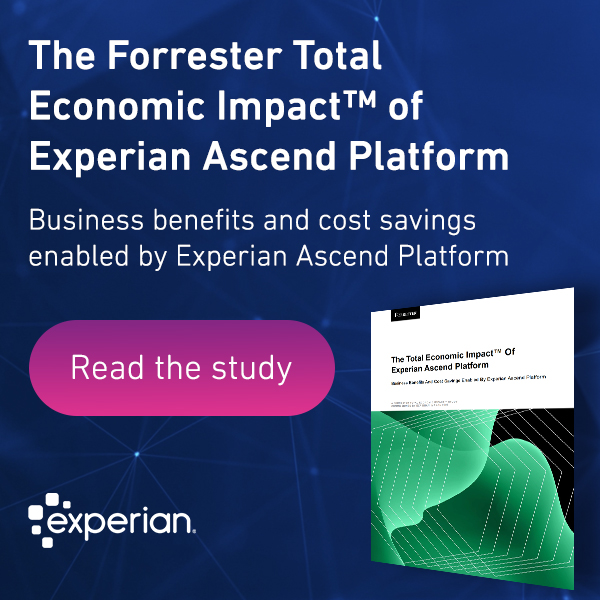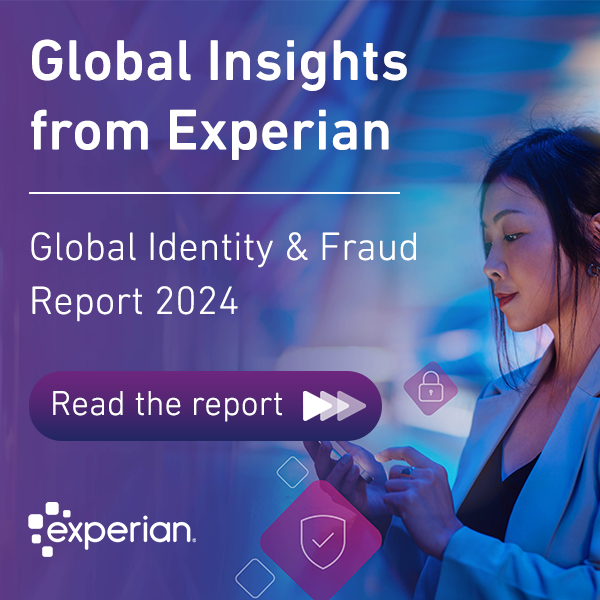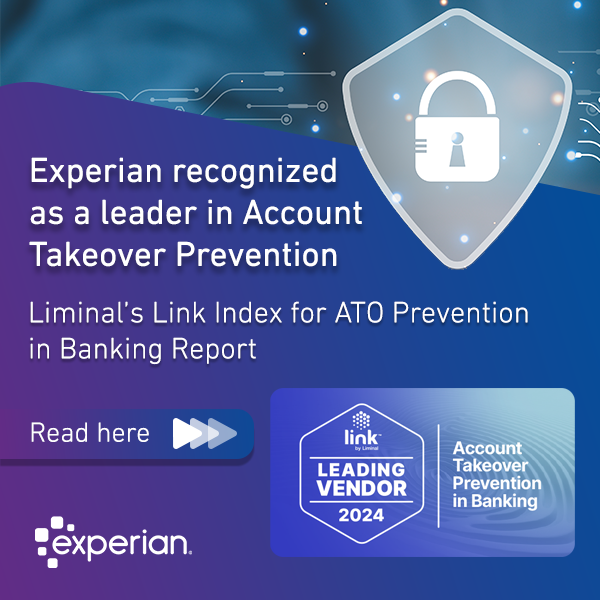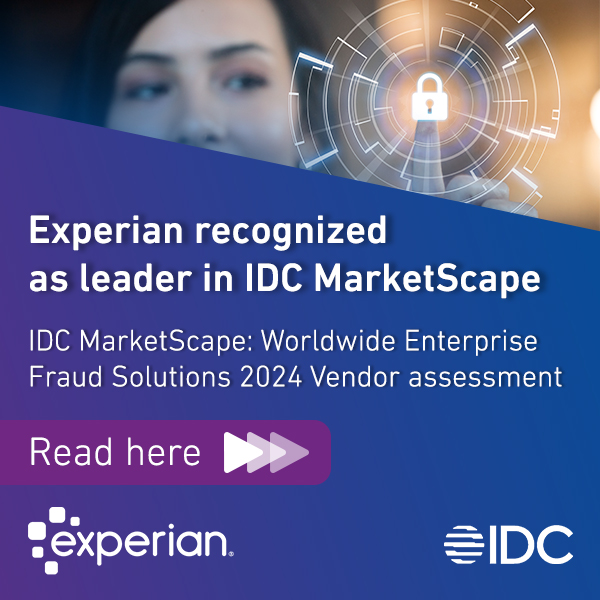Search Results for: DATA AI

The ecosystem of credit lending platforms and technologies has rapidly grown in the past year. Lenders now find themselves in an increasingly competitive market with new players emerging on the scene. More companies now have access to advanced analytics and automation capabilities, and this is helping businesses improve the accuracy and inclusivity of consumer lending decisions – a giant step toward achieving their growth ambitions. Our recent research shows that one of the top priorities for businesses has been to invest in new artificial intelligence and machine learning models for smarter customer decisions. But how effective is building new AI models without considering the data? What is data-centric AI? Building AI models on fixed data has already become an outdated approach. But by coupling data with the best model, better outcomes can be achieved. The concept of data-centric AI was coined by leading thinker in the AI space, Andrew Ng. Ng believed that models in production are only as good as the point-in-time data used to build them. As businesses continue to receive new data, this data needs to feed back into the model if it’s going to continue delivering the best results. This continuous loop of enriching the model with new data can be applied across use cases. The value of data-centric AI models for acquiring new customers By using the latest available data, rather than from 6-12 months ago or longer when the model was originally developed, data-centric AI models can: • More rapidly account for changes in the economy and consumer finances • Reach under-represented populations and provide greater access to credit • Take advantage of newly available types of information from data providers The value of data-centric AI in existing frameworks More observations AI is often limited by the data that was used to create the model. By using a more fluid open-source alternative, different data sets can be inputted to get more observations based on different characteristics and findings. For example, if a business wants to acquire a new type of customer, traditional AI would require a new model with new data sets to be in order to target this new customer. With data-centric AI, businesses can use an existing model and simply expand the data, thus allowing the model to work far more efficiently and target a new consumer base. It is a shared view that businesses should not build models with just their own data, because those data sources are too limited. At the very least, businesses want to combine data with a peer sample. However, an even better way is to use hybrid data sets in order to get the most observations. Data-centric AI makes that process easy without the need to create different models to see different outcomes. Up-to-date data The world is in a state of flux—populations change, people change. This means that the data pools AI models draw on may be compromised, no longer relevant, or have new meaning over time. It’s important to keep AI data sets recent and up to date, and not assume that the models used two years ago still apply today. For AI models to operate efficiently they need current, relevant data. Having a data-centric approach and sweeping through collected observations is essential for any business relying on their AI solutions. Businesses must have processes to understand and test their data to be sure the values are still adding up to what they should be. Being disciplined about data hygiene, all the way back to the source, is a necessity. Enriched and expanded data With model-centric AI, businesses are limited by the data they start with. Data-centric AI makes it possible to expand on the current customer base, which already includes data on customer attributes, with new potential customers that might mimic characteristics of a business's current base. Expanded data can also play a role with financial inclusion and credit worthiness. Having a low credit score does not necessarily mean the consumer is a bad risk or that they shouldn't be allowed access to credit—sometimes, it could mean there is simply a lack of data. Expanding data to include varied sources and adding it to current models without changing their structure, enables businesses to provide credit for individuals who may not have originally been accepted. This new approach in AI is creating solutions that are far more inclusive than previously possible. Data has massively expanded and is constantly evolving. By using data combined with advanced analytics, such as AI, there will be more sophistication in the observations that come from the data. This will allow businesses to better decide what data they choose to rely on while ensuring accuracy. By using expanded data sources, the outcomes of models are changed, leading to more inclusive models better fit for decision making and improving performance. "Models in production are only as good as the point-in-time data used to build them." Andrew Ng Infographic: Why data-centric AI leads to more accurate and inclusive decisions Stay in the know with our latest research and insights:

The ecosystem of credit lending platforms and technologies has rapidly grown in the past year. The top business priority emerging from the pandemic has been to prioritise investments in new artificial intelligence and machine learning models for smarter customer decisions. According to our latest report, business confidence in AI is growing: 81% up from 77% last year. Three reasons why data-centric AI models lead to more accurate and inclusive decisions More observations to better represent the population Easy o update with the most current data Enriched and expanded data sets for a complete view of the customer Stay in the know with our latest research and insights:

In this AI in Business podcast, Shri Santhanam, Executive Vice President and General Manager of Global Analytics and AI, speaks with Emerj founder, Daniel Faggella. Santhanam breaks down unique AI business opportunities and challenges. Here’s a brief summary of the 30-minute podcast: One of the top questions we get from our lending clients is: ‘How has consumer behavior changed and what does it mean for my business.’ Historically, lenders have monitored their models and positions, and how those models would play out through scenario setting in accordance with social, regulatory and shareholder accountabilities. But the magnitude of doing this got more complicated by the pandemic. Lenders with in-house data science and technology teams have seen the bar significantly raised for what needs to be done with advanced analytics and AI. Previously model performance was interesting and insightful. With the pandemic, the number of lending applications and loss rates has been significantly disrupted and the specific outcomes are much more defined and urgent. Solving this problem and getting machine learning operations in order is moving much faster. Today it’s a daily requirement to look at operational activities and try to determine the frequency of high-velocity positions. But, the number one complaint we hear is “we’re running out of data science capacity” where teams are spending up to 80% of their time on data wrangling and their value isn’t being realized. Listen to the podcast and find out more about how Experian is stepping into its client’s value chain and what it means to be a part of AI transformation – scaling advanced analytics in a way that brings the barrier of accessibility down – so businesses can focus on creating innovative products and services for their customers. Get more insights from Shri Santhanam: Maximizing impact from AI investment: 4 pillars of holistic AI Model recalibration drives impactful results during constant change What is the right approach to AI and analytics for your business? Four fundamental considerations

Shri Santhanam, Executive Vice President and General Manager of Global Analytics and AI, speaks to Forbes' Peter High on his Technovation podcast about Experian's Analytics and AI solutions. During times of crisis, innovation accelerates. What was once considered innovation, suddenly falls into the realms of the necessary, with businesses seeking quick, smart solutions to emerging challenges. Although this conversation took place before COVID19 reached the levels of a global pandemic, Santhanam discusses how advanced analytics and AI can be a game-changer for businesses. Key topics include how businesses need to bring together data, tech and analytics to formulate best in class products and services using AI in the form of examples such as Experian Boost. What it takes to run the global analytics and AI function at Experian. How high-profile consulting positions within previous businesses have placed Santhanam in an ideal position to problem-solve. And what he considers to be the two stand-out developments in the analytics and AI space. Listen to the podcast, or read the interview.

Why agile data integration is key to profitability and reduced time-to-market for lenders, and how businesses are looking to cloud, alternative data sources and self-serve to enable this opportunity. “Data integration is increasingly critical to companies’ ability to win, serve, and retain their customers. To accelerate their performance in data integration, companies are evaluating and adopting a range of contributing technologies.” The Forrester Tech Tide: Enterprise Data Integration As the digital world expands, new and alternative data sources continue to emerge rapidly. With this exponential growth comes the need for financial services companies to integrate new data sources into models quickly and seamlessly. The ability to respond promptly to market changes that require new data sources can significantly reduce time to market for lenders, improving customer decisions by using a mix of traditional and alternative data that ultimately raises approval rates and, in turn, profitability. Research conducted by Forrester Consulting on behalf of Experian shows that a lack of available data is one of the three top technology pain points for tech decision-makers at financial services businesses.* According to the same research, 29% of respondents said that acquiring new customers that match the businesses’ risk appetite is a current challenge, while simultaneously reporting that credit scores still dominate data in decisioning. As more data becomes available, the gap continues to widen between what is possible, and what the reality is for financial institutions. With more data accessible through APIs, lenders have the opportunity to enhance their data analytics capabilities, leading to more personalised loan offers and cross-selling products. Our research supports this: 47% of banks and 52% of FinTechs say that increasing personalisation is a top priority. However, at the same time, data integration opportunities also pose challenges for lenders, namely around security, compliance, and cost. Data access and integration challenges As the prospect of open banking proliferates, newly proposed rules by government bodies such as the Consumer Financial Protection Bureau (CFPB) around consumer data sharing could significantly open financial data access through APIs, further enabling the potential for partnerships between financial institutions and data aggregators. Although open data access and the integration of third-party services present lenders with challenges around the cost of cloud services and total ownership, according to a recent trends report from Datos**, financial institutions will need to invest in secure, scalable, and compliant cloud infrastructure to handle the increased data flow and integration requirements. Cloud deployment: enabling data integration Adopting new credit operations technology is pivotal to data-driven strategy for lenders and deploying that technology in the right way can be critical. Cloud makes it easier to connect data feeds, allowing different internal departments to safely work with data from a variety of sources. Most respondents in our study prefer cloud-based technology, with 83% citing that a cloud or hybrid solution is the preferred deployment option and just 17% seeking on-premises deployment. Self-serve data integration Another key component of agile data integration is enabling users in-house to manipulate data sources flexibly. By speeding up the data integration process with low-code and no-code platforms and tools, businesses can customise their APIs regardless of in-house team experience, allowing data integration to happen in days instead of weeks. “Increasing use of low-code and no-code capabilities give business users the ability to create more customized and packaged business analytics capabilities with business-centric modularity and embed into applications via APIs to serve their business objectives.”Gartner’s Top Trends in Data Analytics, 2023 Improving data integration is central to the quest for speed and agility in today’s credit risk market. With 25% of business respondents citing that they prioritise investment in initiatives that accelerate time to market in response to business and market changes, organisations are ready to capitalise on the opportunity. According to Datos, in 2024, next-generation core banking platforms are poised to address these challenges, providing flexibility, agility, and configurability, along with cloud-native benefits, ensuring financial services institutions stay competitive in the rapidly evolving technological landscape.** Learn more about PowerCurve *In a study conducted by Forrester Consulting on behalf of Experian, we surveyed 660 and interviewed 60 decision makers for technology purchases that support the credit lifecycle at their financial services organisation. The study included businesses across North America, UK and Ireland, and Brazil. **Datos Top 10 trends Retail Banking Payments 2024

With the potential annual value of AI and analytics for global banking estimated to reach $1 trillion,1 financial institutions are seeking out efficient ways to implement insights-driven lending. As regulators continue to supervise risk management, lenders must balance the opportunity presented by AI to determine risk more accurately while growing approval rates and reducing the cost of acquisition, with the ability to explain decisions. The challenge of using AI in building credit risk models In a recent study conducted by Forrester Consulting on behalf of Experian, the top pain points for technology decision makers in financial services were reported to be automation and availability of data.2 The implementation of accessible AI solutions in credit risk management allows businesses to improve efficiency and time-to-market metrics by widening data sources, improving automation and decreasing risk. But the implementation of AI and machine learning in credit risk models can pose other challenges. The study also found that 31% of respondents felt that their organization could not clearly explain the reasoning behind credit decisions to customers.2 Although AI has been proven to improve the accuracy of predictive credit risk models, these advancements mean that many organizations need support in understanding and explaining the outcomes of AI-powered decisions to fulfil regulatory obligations, such as the Equal Credit Opportunity Act (ECOA). Moving from traditional model development methodologies to Machine Learning (ML) As lenders move away from traditional parametric models like logistic regression, to ML models like neural nets or tree-based ensemble methods, explainability becomes more complex. Logistic regression has for many years allowed for a clear understanding of the linear relationships between model attributes and the outcome (approval or decline). Once the model is estimated, it is completely explainable. However, ML models are non-parametric, so there are no underlying assumptions made around the distribution (shape) of the sample. Furthermore, the relationships between attributes and outcomes are not assumed to be linear – they’re often non-linear and complex, involving interactions. Such models are perceived to be black boxes where data is consumed as an input, processed and a decision is made without any visibility around the inner dynamics of the model. At the same time, it is possible for ML models to perform better when accurately classifying good customers and those deemed delinquent. Ensuring transparency and explainability is crucial – lenders must be able to identify and explain the most dominant attributes that contribute towards a decision to lend or not. They must also provide ‘reason codes’ at the customer level so any declined applicants can fully understand the main cause and have a path to remediation. The importance of developing transparent and explainable models By prioritizing the development of transparent and interpretable models, financial institutions can also better foster equitable lending practices. However, fair credit decisioning goes beyond the regulatory and ethical obligations - it also makes business sense. Unfair lending leads to higher default rates if creditworthiness is not accurately assessed, therefore increasing bad debts. Removing demographics considered to be the ‘unscored’ or ‘underserved’ (those who are credit worthy but do not have a traditional data trail, but instead a digital footprint comprised of alternative data) can also limit portfolio opportunity for businesses. For these reasons, it is critical to remove or minimize model bias. Bias is an upstream issue that starts at the data collection stage and model algorithm selections. Models developed using logistic regression or machine learning algorithms can be made fairer through carefully selecting attributes relevant to credit decisioning and avoiding sensitive attributes like race, gender, or ethnicity. Wherever sensitive metrics are used, they should be down-weighted to suppress their impact on lending decisions. Some other techniques to mitigate bias include: Thoroughly reviewing the data samples used in modelling. Fair Model Training - Train models using fairness-aware techniques. This may involve adjusting the training process to penalise any discrimination that creeps in. According to Forrester, an essential component of a decisioning platform is one that can “harness the power of AI while enhancing and governing it with well-proven and trusted human business expertise. The best automated decisions come from a combination of both.”3 Developing explainable models goes some way towards reducing bias, but making the decisions explainable to regulatory bodies is a separate issue, and in the digital age of AI, can require deep domain expertise to fulfil. While AI-powered decisioning can help businesses make smarter decisions, they also need the ability to confidently explain their lending practices to stay compliant. With the help of an expert partner, organizations can gain an understanding of what contributed most to a decision and receive detailed and transparent documentation for use with regulators. This ensures lenders can safely grow approval rates, be more inclusive, and better serve their customers. “The solution isn’t simply finding better ways to convey how a system works; rather, it’s about creating tools and processes that can help even the deep expert understand the outcome and then explain it to others.”McKinsey: why businesses need explainable ai and how to deliver it Experian’s Ascend Intelligence ServicesTM Acquire is a custom credit risk model development service that can better quantify risk, score more applicants, increase automation, and drive more profitable decisions. Find out more Confidently explain lending practices:Detailed, rigorous, and transparent documentation that has been proven to meet the strictest regulatory standards. Breaking Machine Learning (ML) out of the black box:Understand what contributed most to a decision and generate adverse action codes directly from the model through our patent-pending ML explainability.References: "The executive's AI playbook," McKinsey.com. (See "Banking," under "Value & Assess.") In a study conducted by Forrester Consulting on behalf of Experian, we surveyed 660 and interviewed 60 decision makers for technology purchases that support the credit lifecycle at their financial services organisation. The study included businesses across North America, UK and Ireland, and Brazil. 2023_05_Forrester_AI-Decisioning-Platforms-Wave.pdf https://www.mckinsey.com/capabilities/quantumblack/our-insights/why-businesses-need-explainable-ai-and-how-to-deliver-it Contributors:Masood Akhtar, Global Product Marketing Manager

We explore four fraud trends likely to be influenced the most by GEN AI technology in 2024, and what businesses can do to prevent them. 2023: The rise of Generative AI 2023 was marked by the rise of Generative Artificial Intelligence (GEN AI), with the technology’s impact (and potential impact) reverberating across businesses around the world. 2023 also witnessed the democratisation of GEN AI, with its usage made publicly available through multiple apps and tools such as Open AI's Chat GPT and DALL·E, Google's Bard, Midjourney, and many others. Chat GPT even held the world record for the fastest growing application in history (until it was surpassed by Threads) after reaching 100 million users in January 2023, just less than 2 months after its launch. The profound impact of GEN AI on everyday life is also reflected in the 2023 Word of the Year (WOTY) lists published by some of the biggest dictionaries in the world. Merriam-Webster’s WOTY for 2023 was 'authentic'— a term that people are thinking about, writing about, aspiring to, and judging more than ever. It's also not a surprise that one of the other words outlined by the dictionary was 'deepfake', referencing the importance of GEN AI-inspired technology over the past 12 months. Among other dictionaries that publish WOTY lists, both Cambridge Dictionary and Dictionary.com chose 'hallucinate' - with new definitions of the verb describing false information produced by AI tools being presented as truth or fact. A finalist in the Oxford list was the word 'prompt', referencing the instructions that are given to AI algorithms to influence the content it generates. Finally, Collins English Dictionary announced 'AI' as their WOTY to illustrate the significance of the technology throughout 2023. GEN AI has many potential positive applications from streamlining business processes, providing creative support for various industries such as architecture, design, or entertainment, to significantly impacting healthcare or education. However, as signalled out by some of the WOTY lists, it also poses many risks. One of the biggest threats is its adoption by criminals to generate synthetic content that has the potential to deceive businesses and individuals. Unfortunately, easy-to-use, and widely available GEN AI tools have also created a low entrance point for those willing to commit illegal activities. Threat actors leverage GEN AI to produce convincing deepfakes that include audio, images, and videos that are increasingly sophisticated and practically impossible to differentiate from genuine content without the help of technology. They are also exploiting the power of Large Language Models (LLMs) by creating eloquent chatbots and elaborate phishing emails to help them steal important information or establish initial communication with their targets. GEN AI fraud trends to watch out for in 2024 As the lines between authentic and synthetic blur more than ever before, here are four fraud trends likely to be influenced most by GEN AI technology in 2024. A staggering rise in bogus accounts: (impacted by: deepfakes, synthetic PII)Account opening channels will continue to be impacted heavily by the adoption of GEN AI. As criminals try to establish presence in social media and across business channels (e.g., LinkedIn) in an effort to build trust and credibility to carry out further fraudulent attempts, this threat will expand way beyond the financial services industry. GEN AI technology continues to evolve, and with the imminent emergence of highly convincing real-time audio and video deepfakes, it will give fraudsters even better tools to attempt to bypass document verification systems, biometric and liveness checks. Additionally, they could scale their registration attempts by generating synthetic PII data such as names, addresses, emails, or national identification numbers. Persistent account takeover attempts carried out through a variety of channels: (impacted by: deepfakes, GEN AI generated phishing emails)The advancements in deepfakes present a big challenge to institutions with inferior authentication defenses. Just like with the account opening channel, fraudsters will take advantage of new developments in deepfake technology to try to spoof authentication systems with voice, images, or video deepfakes, depending on the required input form to gain access to an account. Furthermore, criminals could also try to fool customer support teams to help them regain access they claim to have lost. Finally, it's likely that the biggest threat would be impersonation attempts (e.g., criminals pretending to be representatives of financial institutions or law enforcement) carried out against individuals to try to steal access details directly from them. This could also involve the use of sophisticated GEN AI generated emails that look like they are coming from authentic sources. An influx of increasingly sophisticated Authorised Push Payment fraud attempts: (impacted by: deepfakes, GEN AI chatbots, GEN AI generated phishing emails)Committing social engineering scams has never been easier. Recent advancements in GEN AI have given threat actors a handful of new ways to deceive their victims. They can now leverage deepfake voices, images, and videos to be used in crimes such as romance scams, impersonation scams, investment scams, CEO fraud, or pig butchering scams. Unfortunately, deepfake technology can be applied to multiple situations where a form of genuine human interaction might be needed to support the authenticity of the criminals' claims. Fraudsters can also bolster their cons with GEN AI enabled chatbots to engage potential victims and gain their trust. If that isn’t enough, phishing messages have been elevated to new heights with the help of LLM tools that have helped with translations, grammar, and punctuation, making these emails look more elaborate and trustworthy than ever before. A whole new world of GEN AI Synthetic Identity: (impacted by: deepfakes, synthetic PII)This is perhaps the biggest fraud threat that could impact financial institutions for years to come. GEN AI has made the creation of synthetic identities easier and more convincing than ever before. GEN AI tools give fraudsters the ability to generate fake PII data at scale with just a few prompts. Furthermore, criminals can leverage fabricated deepfake images of people that never existed to create synthetic identities from entirely bogus content. Unfortunately, since synthetic identities take time to be discovered and are often wrongly classified as defaults, the effect of GEN AI on this type of fraud will be felt for a long time. How to prevent GEN AI related fraud As GEN AI technology continues to evolve in 2024, its adoption by fraud perpetrators to carry out illegal activities will too. Institutions should be aware of the dangers they possess and equip themselves with the right tools and processes to tackle these risks. Here are a few suggestions on how this can be achieved: Fight GEN AI with GEN AI: One of the biggest advantages of GEN AI is that while it is being trained to create synthetic data, it can also be trained to spot it successfully. One such approach is supported by Generative Adversarial Networks (GANs) that employ two neural networks competing against each other — a generator and a discriminator. The generator creates synthetic data, while the discriminator evaluates the generated data and tries to distinguish between real and fake samples. Over time, both networks fine tune themselves, and the discriminator becomes increasingly successful in recognising synthetic content. Other algorithms used to create deepfakes, such as Convolutional Neural Networks (CNNs), Recurrent Neural Networks (RNNs), and Autoencoders, can also be trained to spot anomalies in audio, images, and video, such as inconsistencies in facial movements or features, inconsistencies in lighting or background, unnatural movements or flickering, and audio discrepancies. Finally, a hybrid approach that combines multiple algorithms often presents more robust results. Advanced analytics to monitor the whole customer journey and beyond: Institutions should deploy a fraud solution that leverages data from a variety of tools that can spot irregular activity across the whole customer journey. That could be a risky activity, such as a spike in suspicious registrations or authentication attempts, unusual consumer behaviour, irregular login locations, suspicious device or browser data, or abnormal transaction activity. A best-in-class solution would give institutions the ability to monitor and analyse trends that go beyond a single transaction or account. Ideally, that means monitoring for fraud signals happening both within a financial institution’s environment and across the industry. This should allow businesses to discover signals pointing out fraudulent activity previously not seen within their systems or data points that would otherwise be considered safe, thus allowing them to develop new fraud prevention models and more comprehensive strategies. Fraud data sharing: Sharing of fraud data across multiple organisations can help identify and spot new fraud trends from occurring within an instruction's premises and stop risky transactions early. Educate consumers: While institutions can deploy multiple tools to monitor GEN AI related fraud, regular consumers don't have the same advantage and are particularly susceptible to impersonation attempts, among other deepfake or GEN AI related cons. While they can't be equipped with the right tools to recognize synthetic content, educating consumers on how to react in certain situations related to giving out valuable personal or financial information is an important step in helping them to remain con free. Learn more with our latest fraud reports from across the globe: UK Fraud Report 2023 US Fraud Report 2023 EMEA + APAC Fraud Report 2023

What are lenders prioritising when it comes to Gen AI? We take a look at five transformative use cases in lending, and organisational priorities for integrating Gen AI into customer lifecycle processes. Although Generative Artificial Intelligence (Gen AI) only launched publicly in the form of Chat GPT last November, adoption has been widespread and rapid. Even in typically risk-adverse industries like financial services, our research shows that there is widespread recognition that Gen AI could deliver a range of benefits across business functions. We identified five areas of focus for lenders based on our research. In a study conducted by Forrester Consulting on behalf of Experian, we surveyed 660 and interviewed 60 decision makers for technology purchases that support the credit lifecycle at their financial services organisation. The study included businesses across North America, UK and Ireland, and Brazil. The qualitative research showed that lenders are already using a type of Gen AI, Large Language Models (LLMs), in their operations, with a focus on testing across areas such as customer service and internal processes before deploying to credit operations. We look at the potential use cases, and how businesses are using Gen AI now. 1. Personalised customer experience Customers today expect a personalised lending experience that is tailored to their unique needs and preferences. GenAI can leverage customer data to generate personalised loan offers, recommendations, and repayment plans. This helps lenders improve customer satisfaction and loyalty, leading to increased customer retention and revenue growth. This is an area that is front of mind for the companies in our research – nearly half of businesses surveyed are planning to implement or expand technology capabilities to either upsell or retain customers in the next 12 months. Furthermore, 50% of companies believe that offering more tailored underwriting and pricing is a top priority in their credit operations, followed by 44% who also aim to increase personalisation in marketing, products, and services to their customers. According to the research, some organisations have formed alliances with technology providers like OpenAI and Microsoft to investigate and further explore the use of LLMs. These partnerships involve analysing customer data to identify opportunities for cross-selling. 2. Enhancing models with new data sources With new data sources emerging all the time, Gen AI is one of the technologies that will most likely accelerate the opportunity for businesses to incorporate them into models. Lenders could include sources such as social network data into their models by using LLMs. This unstructured data, including customer emotions and behaviours on social networks, would be treated as an additional variable in the models. According to the research social media data and psychometric data is already used across financial services, to varying degrees. It showed that 35% of retail companies use social media data, while 29% of FinTechs use psychometric data. Auto finance companies sit at lower end of the adoption scale, with only 12% using social media data and 15% psychometric data. 3. Operational efficiencies Gen AI can help bring operational efficiencies to customerjourneys across the entire lifecycle, offering lenders theability to automate and streamline various processes,resulting in improved productivity, cost savings, andenhanced customer experiences. One of the top challenges for businesses surveyed isimproving customer journeys during onboarding, and thiswas particularly significant for credit unions / buildingsocieties (53%). 4. Detecting and preventing fraud Gen AI can play a crucial role in fraud detection by analysing patterns and anomalies in vast datasets. By leveraging machine learning techniques, Gen AI models can proactively identify potentially fraudulent activities and mitigate risks. The ability to detect fraud in real-time improves the overall security of lending operations and helps protect lenders and borrowers from financial losses. Detecting and preventing fraud is a constant challenge for lenders. 51% of retailers and 47% of credit unions/ building societies surveyed said that reducing fraud losses is a key challenge for them. 5. Customer service Driven by advances in the machine learning and AI space, the world of customer service has benefited hugely from the adoption of virtual assistants and chatbots in recent years. This looks to continue, with businesses saying that LLMs are being tested for customer service purposes, allowing lenders to identify customer issues and automate actions. What's next for lenders? The research found that lenders are utilising various machine learning techniques like regression, decision trees, neural networks, and random forest, along with LLMs. Businesses are in the early stages of exploring how they can use LLMs in credit risk models, but it will undoubtedly involve a blend of existing and new capabilities. As with any emerging technology, it’s important to look at potential risk. The research indicated that organisations see challenges and concerns when it comes to the use of LLMs in their models. It is crucial to ensure the models are trusted, validated, and properly understood to avoid reliance on outsourced solutions and maintain control and visibility over the models’ functions. The ability to explain decisions in Gen AI to avoid bias can be difficult, and businesses will be watching the regulators to understand how best to proceed. There is no doubt, however, that Gen AI will optimise the credit customer lifecycle, creating vast opportunities for lenders. Download PDF More on Gen AI

Fraud prevention is a critical concern for businesses today. To help combat this ever-present threat, the consortium approach has emerged as a powerful tool in the fight against fraud. By pooling resources, expertise, and creating visibility, consortium members can be more effective in detecting and preventing fraudulent activities. con-sor-tium noun: A group of people, countries, companies, etc., who are working together on a particular project. What is a consortium? Within business, consortiums are a global concept and can operate under multiple categories, including finance, marketing, and tech. A well-known, successful example is Star Alliance. They are a group of airlines, whose agreement enables their members to share and benefit from flights, airport lounges, and frequent flyer programs. All Star Alliance members are working towards the same goal, which is to offer their customers a seamless travel experience. Key benefits of the consortium approach Resource sharing: Pooling resources like funding, expertise, and infrastructure can lead to cost savings and efficient resource utilisation. Risk mitigation: Shared risks make it easier for organisations to tackle ambitious projects or ventures with reduced individual exposure. Access to expertise: Members can tap into the collective knowledge and skills of the consortium, enhancing their capabilities. Market influence: Consortiums often have more influence in negotiations, regulations, and standards-setting, benefiting all members. Innovation: Collaboration can foster innovation through cross-pollination of ideas and technologies among members. Economies of scale: Consortiums can negotiate better deals on purchases or services due to their combined purchasing power. Reduced competition: In some cases, members can reduce direct competition among themselves by coordinating efforts. Market entry: Consortiums can facilitate market entry, especially in foreign markets, by leveraging each other's networks and knowledge. Shared infrastructure: Access to shared facilities or infrastructure can save costs and accelerate projects. Brand recognition: Being part of a reputable consortium can enhance an organisation's credibility and market presence. However, consortiums also come with challenges such as coordination issues, conflicts of interest, and shared decision-making. Successful consortiums require effective governance structures and clear agreements among members. Consortiums in fraud detection and prevention The success of a consortium relies on the collective commitment of its members to a shared goal. In the context of fraud prevention, this means maintaining consistent and high-quality insights across all members. To achieve this, consortium members adhere to an agreement that covers elements such as data quality and data frequency. These agreements ensure that all participants contribute their best insights and information. By fostering a culture of cooperation and sharing, consortiums create an environment where valuable insights can be harnessed to combat fraud effectively. However, it's crucial to emphasise that the success of consortiums ultimately depends on the active participation and contribution of all its members. Consortiums can only thrive when every member is dedicated to making their quality insights accessible to the group. Read more about how consortiums can revolutionise fraud detection and prevention by sharing data on fraudsters across different product types and industry sectors with Hunter.

With an ever-growing number of data sources, businesses must be able to rapidly access and integrate them into decisioning processes using no-code tools to stay ahead of the competition. Today’s customer journey has become increasingly sophisticated. As most firms that interact with customers can attest, this journey is a dynamic process shaped by a range of decisions. Businesses need to decide what is the most compelling offer to deliver to a new customer. Should you approve their loan application? Could the customer gain more from sustainability-linked loans or greener mortgages? What is rich data? These diverse decisions are ideally informed by rich data. This is all the available data, including new data derived from analytics using advanced techniques such as Machine Learning and using rules to make predictions and to calculate scores. While most firms have this data, it is difficult to gather, prepare and integrate into the decisioning processes. Multiplicity of data sources Data types and sources are growing. With regulatory bodies gradually approving the use of more data globally, businesses are faced with an opportunity dressed up as a challenge. Speedy integration of different data sources gives organizations a competitive edge, so finding vendors that can enable firms to utilize available data will positively impact them from a cost efficiency perspective, while also creating the potential for revenue growth. The future is to empower business users with no-code data management No-code data management capabilities add a whole new meaning to self-sufficiency for businesses. It will enable teams across organizations to rapidly change data-driven strategies without much vendor involvement. Gartner estimates that by 2025, 70% of new applications developed by enterprises will use low-code or no-code technologies, up from less than 25% in 2020. Moving towards client self-service with no-code capabilties is the goal of most businesses. These capabilities are already allowing teams supporting clients to rapidly integrate data sources into their solutions, providing the perfect test ground for business user enablement. If a decision strategy requires changes and a new data source, PowerCurve users can quickly adapt. They can now gather and prepare the right data and deliver it to the system within days. These changes can be instantly published through secure and easily adjustable APIs that support the latest industry standards and frameworks such as OpenAPI and OAuth. An effective customer journey relies on informed decisions and these decisions rely on the right data and advanced analytics. While Experian's PowerCurve platform is well known for automating a range of decisions across the customer lifecycle, it is the data integration capabilities that ensure these decisions are informed by rich data and insights. Creating a harmonious relationship that produces superior and trustworthy results for businesses. No-code data management enables businesses with easy and rapid data source access to deliver rich and insightful data to decisioning processes.

In today's fast-paced digital landscape, businesses are inundated with an unprecedented amount of data and information. Making informed decisions with the data quickly and effectively has become a crucial factor for success. Enter digital decisioning—a transformative approach that harnesses the power of data, analytics, and automation to drive reliable and expedited decision-making. This article delves into the world of digital decisioning, exploring its significance, components, and benefits. The Essence of Digital Decisioning At its core, digital decisioning is the process of leveraging software solutions that use digital decisioning platforms or custom-built engines to author decision logic; use decision intelligence technologies such as machine learning and AI; use digital decisions in vertical and horizontal use cases; and manage the full decision logic lifecycle, including feedback loops, to continuously improve decision logic. It enables organizations to make well-informed choices by automating and optimizing complex decision processes. By amalgamating data from various sources in real-time, including credit data, user behavior, market trends, historical data, and external factors, digital decisioning ensures that timely decisions are not only data-driven but also contextually relevant. Components of Digital Decisioning Continuous Data Feed: This is the lifeblood of digital decisions. Organizations normalize data from disparate sources to form comprehensive and accurate datasets. Customer data might include income, credit history, transactional data, bill payment, or digital footprint data; however, regardless of the sources, it’s critical that data is coalesced into a single, virtualized view. Advanced Analytics and Machine Learning: Analytics and machine learning algorithms are deployed to extract meaningful insights from the collected data. These insights are used to model decision scenarios, predict outcomes, and uncover hidden patterns. Decision Models: Decision models are created based on the insights derived from data analysis. These models define the rules and logic for making decisions, incorporating factors such as risk tolerance, business goals, and regulatory compliance. Direct Feedback Loop: Every decision has an outcome. For example, an automated loan offer is either accepted or declined by the customer. These outcomes — good and bad — automatically feed into the decisioning model, which enables the machine learning technology to “learn” which decisions are optimal, given the circumstances and customer profile. This enables the model to adapt and grow more accurately and precisely over time. Automation: Automation engines execute the decision models in real time, allowing for rapid and consistent decision-making without human intervention. This enhances efficiency and minimizes the risk of errors. According to a 2022 Gartner poll, the CIO Agenda, more than 80% of companies plan to keep or grow their investment in automation solutions. Benefits of Digital Decisioning Enhanced Accuracy: Digital decisioning eliminates human biases and inconsistencies, resulting in more accurate and objective decisions. Improved Efficiency: Automation reduces decision-making time from hours or days to milliseconds, enabling organizations to respond swiftly to market changes and customer demands. Hyper Personalization: By considering individual preferences, behaviors, and history, digital decisioning facilitates the creation of tailored experiences for customers, leading to higher satisfaction and engagement. Scalability: The automated nature of digital decisioning ensures that it can handle a high volume of decisions seamlessly, making it ideal for businesses experiencing rapid growth. Regulatory Compliance: Explainable decision models can be designed to incorporate regulatory guidelines and compliance requirements, reducing the risk of legal complications. Use Case: Respond faster to credit card applications and personalize cross-sell offers Customers apply online for a credit card from a bank. As they’re being pre-qualified, digital decisioning will instantly analyze the customers’ accounts with the bank including disclosed and undisclosed cash flow. A digital decisioning software solution enables the bank to assess risk exposure and anticipate the customer’s immediate need(s), thereby automating the application assessment and approval steps to reduce approval times from weeks to minutes. Based on the bank’s comprehensive understanding of that customer at that moment, it triggers a personalized cross-sell offer for another relevant financial product, automatically boosting incremental revenue. Conclusion Digital decisioning marks a pivotal advancement in how choices are made in business. By harnessing the power of data, analytics, and automation, organizations can make faster, more accurate decisions that are aligned with their goals and market realities. As this technology continues to evolve, it will reshape industries and empower individuals to navigate the complex digital landscape with confidence. Experian’s decisioning management platform allows clients to operationalize the power of rich data, advanced analytics, and automated decisioning software to support the customer lifecycle. Its key differentiators include credit risk, fraud risk, and strategy expertise, fast deployment of strategies into test and production, empowerment of business users, and proactive monitoring of strategy performance by users. Its key use cases include reducing acquisition costs, credit risk, and fraud risk, and improving acceptance rate and the customer journey. Experian has been named a Technology Leader in the August 2023 SPARK Matrix on Digital Decisioning Platforms report published by Quadrant Knowledge Solutions. The report highlights the growth of decisioning platforms and the changing market trends that are driving adoption, including the role machine learning and AI are playing in the technology market. This placement is proof that Experian offers best-in-class capabilities through market-leading data, orchestration and automation, advanced analytical models, decision performance, and reporting. Our cloud-based infrastructure enables a scalable and modular platform that allows our solutions to be suitable for customers of all sizes. Read the report Experian’s Decisioning Management Platform: Accelerating analytics, decisioning, and fraud detection automation Continuous improvement loop: Advanced machine learning models improve decisioning quality

Did you miss these July business headlines? We’ve compiled the top global news stories that you need to stay in-the-know on the latest hot topics and insights from our experts. Digital experience is a key priority for the post-covid consumer TechWire Asia reports on data from Experian’s latest Global Insights Report to look at consumer expectations and the digital experience businesses can offer as consumers spend more time online. Experian CIO on digital identity, personalization and building trust with consumer data Kathleen Peters, NA Chief Innovation Officer, speaks with Finovate in this interview discussing the 2022 Global Identity & Fraud Report and thoughts on digital identity and how financial services companies can use consumer data to their advantage 91% of Indians prefer online payment methods Business Today India reports on findings from the Global Insights report, with digital payments having overtaken credit cards with 91 percent of Indians preferring online payment methods. Spain, the second country most concerned about online fraud CSO Computer World explores the findings from the 2022 Global Identity & Fraud Report from a Spanish consumer perspective, revealing that Spain is the second country most concerned about online fraud globally. Stay in the know with our latest research and insights:




